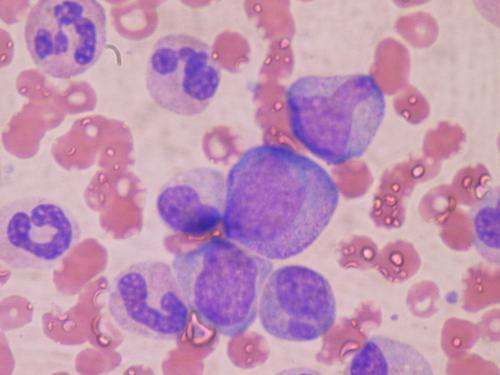
Mount Sinai researchers have discovered a way to enhance the potency of blood-forming stem cells, potentially opening the door to a new approach for bone marrow transplantation, according to a study published on February 27 in Cell Stem Cell.
The scarcity of blood-forming stem cells, known as hematopoietic stem cells (HSCs), severely limits bone marrow transplantation, which can cure many blood disorders and solid tumors. The Mount Sinai team reports that manipulation of metabolic activity around lysosomes, the storage and recycling centers within cells, can increase by more than 90-fold the potency of blood-forming stem cells in bone marrow transplantation.
“Hematopoietic stem cells lose their stem cell potential once they’re cultured in a dish, which limits their ability to be easily propagated in the laboratory,” says Saghi Ghaffari, MD, Ph.D., Professor of Cell, Developmental and Regenerative Biology in the Black Family Stem Cell Institute and The Tisch Cancer Institute at the Icahn School of Medicine at Mount Sinai, and lead investigator of the study. “In order for these stem cells to maintain optimal potency, they shouldn’t be constantly dividing—putting them under metabolic stress that can alter their health and longevity. Instead, they should be in a dormant, or quiescent, state. But maintaining quiescence of blood stem cells outside of the body has been challenging. We discovered that lysosomes are key to the dormancy of these cells. We further learned that repressing lysosomal activity—rather than their stimulation—enhances stem cell quiescence and potency, and may have therapeutic value.”
Through their extensive in vivo work in mice, the Mount Sinai scientists used an effective and specific lysosomal inhibitor that reduces lysosomal acidity and amino acid release in the cells. The net effect is to restore stem cells with activated lysosomes to a quiescent state. The study further found that the inhibition of glycolysis—the breakdown of glucose and other sugars by enzymes—also enhances quiescence and potency of hematopoietic stem cells, which are believed to rely on glycolysis for their energy.
Scientists have been trying for years to generate more HSCs in the laboratory for clinical use. “Our methodology is different from others in that it is based on quality rather than quantity,” explains Dr. Ghaffari, a stem cell biologist and recognized expert in blood disorders. “By restraining lysosomal activity we produce fewer blood-forming stem cells for bone marrow transplantation, but they work much better because we’ve preserved and enhanced their potency.”
Source: Read Full Article
